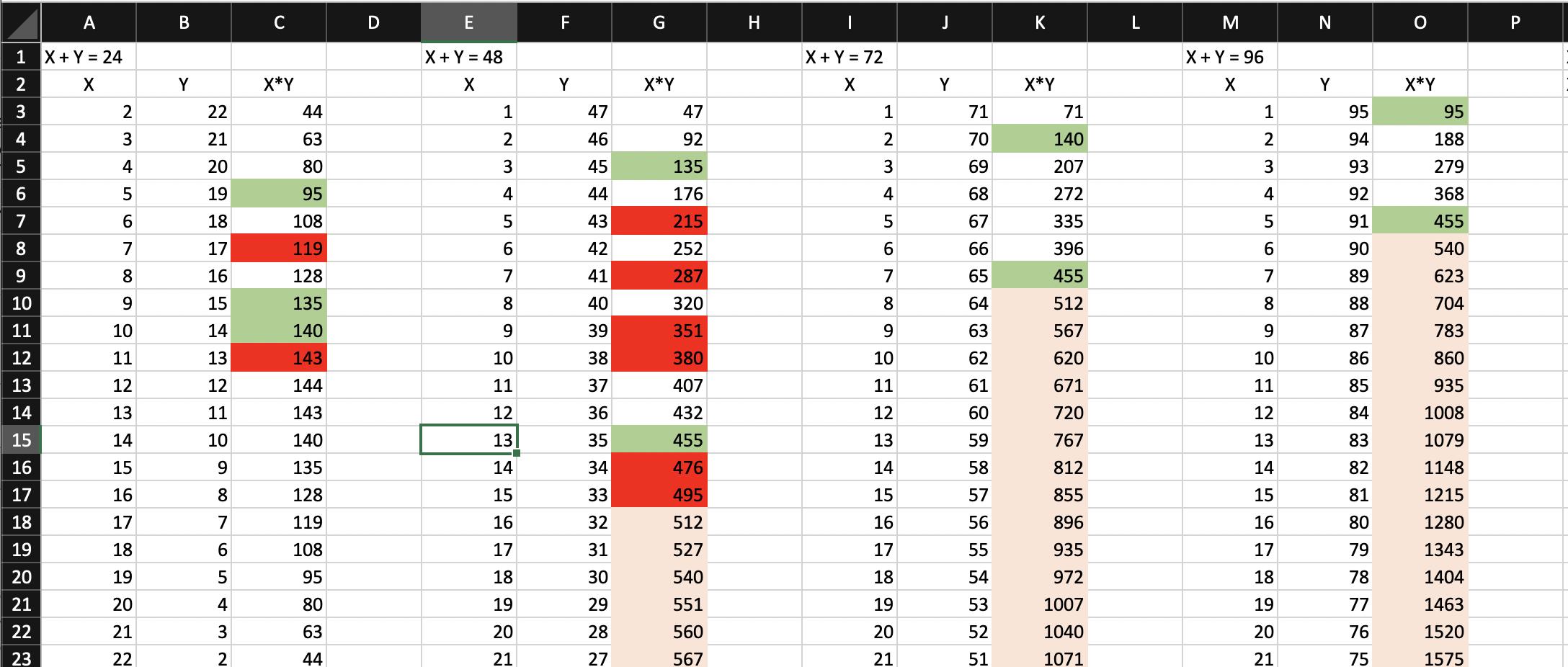I don't think a definitive answer can be reached, I did see Lanny's answer but I don't agree with the logic above to find (9, 15) as the pair and this is my answer. Lanny's answer does not include 135, pairs being (9, 15) and (3, 45), or 140 with the pairs being (10, 14) and (2, 70). I don't see the reasoning to eliminate these. I think the right logic is to figure out that pairs of products that make it ambiguous for Penny to know what the numbers are, otherwise he would know right away. Sandy can eliminate all sums that only have one product pair correspond to it, because she doesn't know the solution so there must be at least two possibilities for each sum.
Because this leaves only one option for a product like 215 because (1, 215) is the only product pair for the sum 216, (5, 43) gets eliminated too. Several other pairs get eliminated (shown in red in the picture) from this logic. When you come to Sandy being able to say she knows the numbers, there is an issue. Sandy can't know the numbers because there are two pairs for each sum of 24, 48, 72, 96. Sandy can't say she knows the answer yet then, because no matter what sum he knows, there are two viable options, shown in green.
Following that, Penny can't know which pair is correct because each product (95, 135, 140, 455) still has at least two options. Thus, I do not see a logical step forward to eliminate numbers with 135 and 140 pairs factored in. If 135 and 140 were not options, the answer could be solved. Otherwise, I don't think it can with the given information. Thanks for any feedback addressing this.



